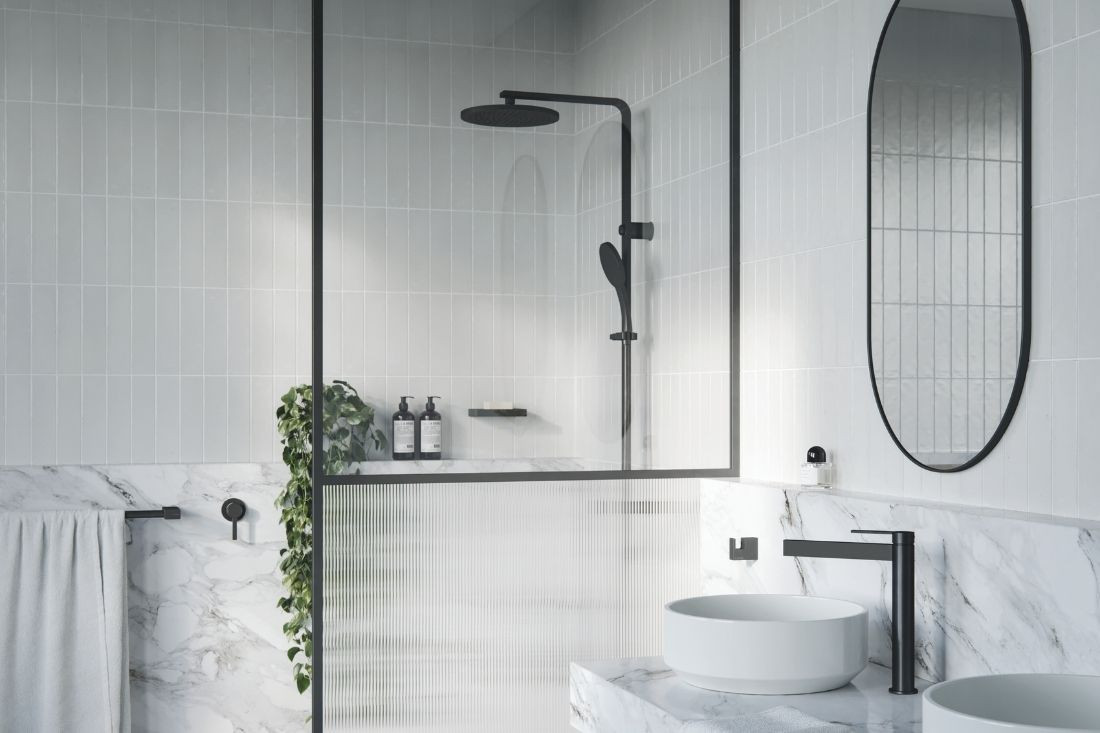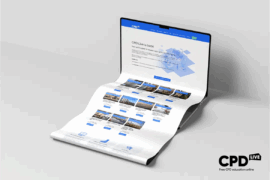Water – the Earth’s most precious resource – plays a crucial role in the built environment. As we face the inevitable repercussions of climate change, we investigate the role of water conservation in the residential context and explore processes and technologies that can help preserve this vital liquid.

In the aptly titled Indesign CPD Webinar ‘Sustaining the Flow: Water for the Future‘, Indesign magazine’s own Alice Blackwood invited John Hoogendoorn, the Creative Design Manager of Phoenix, Ljiljana Gazevic, the Director Interior Design of SJB and Ben Robertson, the Director of Tecture to discuss the role of the design industry and built environment in water conservation. In examining the challenges, possibilities, and advancements associated with sustaining the flow of this precious resource, the experts offered a diverse range of perspectives on present circumstances and how things could be improved moving forward.
John Hoogendoorn, the widely recognised and awarded creative force behind Phoenix’s innovative products, kick-starts the discussion. With over 30 years in the design industry, and a prominent role as the market-leading tapware, showers and accessories’ producer, John knows more than many about water, design considerations that come with creating sustainable bathrooms and kitchens – and innovations aimed at protecting the resource. ‘At Phoenix, we create clever products that are contemporary in their thinking and not only look beautiful but help the users improve their lives every day,’ says John. ‘We’re constantly trying to help the user save energy and water by continuously incorporating small improvements into our products.’
There is no doubt water needs saving. With the average person using around 340 litres per day, water used in homes and gardens amounts to 12% of overall water utilisation. That 12% consists of 34% water used in showers, 26% utilised in the toilet and 23% in the laundry. Gardens – a significant consumer of water – contribute to around 40% of water usage.
Unfortunately, some of that water used in a household gets wasted. John points to hot water services, explaining that since it takes a while to get hot water from the pipes to a tap or shower, everything used between those two places goes to waste. ‘Let’s say it takes 30 seconds for a shower to warm up, and a shower uses eight litres per minute. That’s four litres of wasted water every time someone uses a shower.’ Improving that is one of the main points of focus for Phoenix – but not the only one. ‘When you think of a mixer tap, there’s a handle that lifts, usually at the base of a mixer. You go to the right for cold and to the left for hot, but that means the centre is warm – when you flick the mixer tab up, you engage that hot water service straightaway,’ John explains. ‘And so you spend 15-20 seconds washing your hands, by which stage the water hasn’t reached you, so now you’ve filled the pipe with warm or hot water without actually using it.’

As one of the leading countries that prioritise water efficiencies, Australia has experienced tremendous progress in developing technologies that help save water – and as a leader in their field, Phoenix continues to play an essential role in that process. Their new product is one of the best examples of new technology that promotes more efficient water use. The brand has just released a new collection called Lexi MKII that uses a new, extremely clever cartridge technology. ‘When you open the cartridge, it opens it in the cold position, without engaging the hot water service,’ says John, referencing the problem with hot water wastage he has mentioned earlier.
Another example he brings up are tap aerators used Down Under. While the rest of the world uses standard aerators that throttle the flow as more water is pushed through, in Australia, we use aerators that have an absolute maximum output – so if an aerator is rated to five litres per minute, it will plateau at that – no matter how much pressure is put through it.
An essential aspect of new technology is ensuring compliance with relevant standards – particularly because tapware and shower manufacturing is a highly regulated industry with standards updated fairly often to reflect the changing needs of modern society. John says that for both showers and tapware, the standards are about to change. The standards for showers are only up to four stars at the moment, while the tapware is up to six, but in the next iteration of the criteria, they will both go up to ten stars – setting a much higher bar for product approvals down the line.

The panel agrees on the importance of standards as a critical element when planning a project and evaluating products best for the design sustainability and aesthetic – particularly in the kitchen and bathroom. The products have to be functional and operational, and demonstrate all the relevant performance requirements. It’s also crucial to assess the design response suitable to the type of the project. Between multi-residential apartment blocks and high-end, bespoke residential settings – to holiday homes that can have between 12-15 people using the facilities at once and housing with shared laundry facilities – it is paramount to understand the needs of the space and what the brief asks for.
Ben mentions another aspect of evaluating products that can be challenging – and the role of a designer in interrogating and questioning the client’s perception of what is indispensable. ‘Do our clients need to have spray jets in their shower? Or can we get away with just a more standard shower rose versus having three different ways to expel water in a shower?’ he says. Helping the client make the right product choices is one way of ensuring water use is prioritised and more efficient – but not the only one.
Ljiljana brings up the importance of efficient planning and consideration of vertical stacking of the kitchen and the bathrooms in a building – it’s vital to avoid floor plans that require water to travel great distances. Even though this approach prioritises water conservation – and is more economical from a build point of view – it can jar slightly with the clients’ idea of comfort. Multiple bathrooms and ensuites are often associated with a sense of luxury, even if they go against water conservation best practice. ‘Does every single bedroom need a bathroom? How many fixtures should we have? How much water do we need to run to supply all of that? These are all considerations for us to revisit and constantly monitor to assess what is necessary, what we need,’ says Ljiljana. John agrees that it’s always a balancing act – being mindful of the amount of water you use and still benefiting from the relaxing or energising potential of the bathroom. Handheld shower spray, shallow basins that use less water and steam rooms instead of spa baths – these are some of the options that can help improve the water conservation potential of the space.
But water conservation is much more of a holistic task – and there are opportunities to save water outside the bathroom, too. Outside the home itself, in fact – and that’s where Ben thinks it should start. On average, garden water use amounts to 40% of the household usage, so designing outdoor spaces that rely on rainwater and planting greenery that doesn’t require irrigation can help tremendously. As can removing a pool from your building plans. ‘I think it’s really important that we encourage all of our clients to have water tanks too. With building permits, we’re still only encouraged to either pick either a water tank or a solar hot water gas booster on the ceiling – that should become mandatory,’ he adds.

The panellists demonstrate that water conservation can be an all-encompassing and fully integrated set of design decisions – and so it is worth consulting experts to ensure water preservation is front and centre when designing a dwelling.
From an ecologically sustainable development or energy consultant to hydraulics engineers and landscape architects – when designing a residence, numerous professionals can assist with prioritising water treatments from the very beginning of the project, offering the specialised knowledge most of the architect will lack. ‘We also need an energy consultant or ESD consultant to be on board to give us a star rating on any project,’ points out Ben.
However, there are also experienced industry experts who work within the bathroom sector, such as John and Phoenix engineers, who can share a vast amount of knowledge, research and insight to help inform any project.
INDESIGN is on instagram
Follow @indesignlive
A searchable and comprehensive guide for specifying leading products and their suppliers
Keep up to date with the latest and greatest from our industry BFF's!

London-based design duo Raw Edges have joined forces with Established & Sons and Tongue & Groove to introduce Wall to Wall – a hand-stained, “living collection” that transforms parquet flooring into a canvas of colour, pattern, and possibility.

Welcomed to the Australian design scene in 2024, Kokuyo is set to redefine collaboration, bringing its unique blend of colour and function to individuals and corporations, designed to be used Any Way!

For Aidan Mawhinney, the secret ingredient to Living Edge’s success “comes down to people, product and place.” As the brand celebrates a significant 25-year milestone, it’s that commitment to authentic, sustainable design – and the people behind it all – that continues to anchor its legacy.

The final day of CPD Live’s 2025 season delivers three must-attend sessions exploring circular design for furniture and fitouts, and the science behind safe, high-quality drinking water. Starting from 9 AM AEDT, 16th October – it’s your last opportunity this year to join our Live CPD sessions and finish 2025 inspired.

CPD Live’s final live-presented season for 2025 continues with a powerful Day 2 lineup, delving into façade weatherproofing, apartment design trends, smart bathrooms, and digital compliance. Starting from 9 AM AEDT, these free CPD-accredited sessions will help you finish the year with fresh insight and full compliance confidence.
The internet never sleeps! Here's the stuff you might have missed

Australia’s first planted light rail corridor sets new benchmark for transport-led urban transformation.

Phillip Withers joins the podcast to discuss landscape design in relation to Country, place and European notions of control, as well as his part on the Habitus House of the Year 2025 Jury.